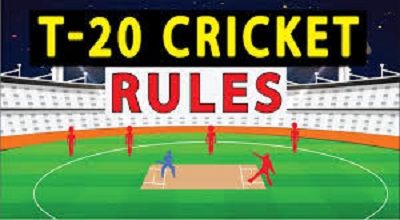Rules of T20 Cricket
The latest rules for T20 cricket, particularly for the 2025 Men’s T20 World Cup, include several significant changes. The tournament format has been revised: 20 teams will participate, divided into four groups of five teams each. The top two teams from each group will advance to a “Super 8” phase, further divided into two groups of four. The top two teams from these groups will then progress to the semi-finals.
The remaining eight positions in the tournament will be decided through regional qualifiers. Africa, Asia, and Europe will each have two qualification spots, while the Americas and East Asia Pacific regions will have one spot each.
There have also been changes to the Decision Review System (DRS) protocols, particularly concerning stumpings. Previously, umpires often checked for potential catches off the bat when reviewing stumpings. Now, if a stumping is under review, the focus will be solely on the stumping, excluding any assessment of a potential catch. If a catch needs to be reviewed, it will require a separate DRS request.
Modifications have been made to the concussion substitution rule. If a player is injured and replaced, the substitute cannot bowl if the original player was already barred from bowling. In case of an injury, there is a maximum of four minutes for a medical examination to decide whether the player can continue or must retire.
Additionally, the no-ball rule has been expanded. The third umpire’s role now includes checking the placement of the bowler’s back foot, ensuring it remains behind the bowling crease. This is in addition to assessing the front foot for no-balls.
These changes are intended to enhance the game’s excitement and ensure fair play.
Here are some key rules of T20 cricket:
Number of Players
- Each team consists of 11 players.
- Substitutes may be included but are not allowed to bat, bowl, or act as wicketkeepers.
Overs
- Each team bowls a maximum of 20 overs in an innings.
- An over consists of six legal deliveries.
Powerplay
- The first six overs of each innings are known as the powerplay.
- During the powerplay, fielding restrictions are in place. Only two fielders are allowed outside the 30-yard circle.
Fielding Restrictions
- In non-powerplay overs, a maximum of five fielders are allowed outside the 30-yard circle.
- During the power play, only two fielders are allowed outside the 30-yard circle.
No-Balls
- Overstepping the popping crease while bowling results in a no-ball.
- A free hit is awarded for most no-ball offenses (except for overstepping).
Wide Balls
- Wides are called for deliveries that are too wide for the batsman to reach.
- Extra runs are awarded for wides, and the ball is re-bowled.
Free Hits
- A free hit is awarded for most no-ball offenses.
- The batsman cannot be dismissed off a no-ball on a free hit, except for a run-out.
Extras
- Extras include byes, leg byes, wides, and no-balls.
- These are added to the team’s total but not to the individual batsman’s score.
Dismissals
- Batsmen can be dismissed by getting bowled, caught, lbw, run out, stumped, or hit wicket.
- Each team bats until all 10 wickets are taken or the allotted overs are completed.
Tied Matches
- In the case of a tie, a Super Over may be played to determine the winner.
- If the Super Over is also tied, subsequent Super Overs may be played until a winner is determined.
Power Surge and Bash Boost (Optional)
- Some T20 leagues have introduced additional rules like the Power Surge and Bash Boost to add more excitement to the game.
Field Restrictions
- A maximum of five fielders are allowed outside the 30-yard circle during the first six overs of the innings.
- This restriction aims to encourage attacking play and prevent excessive defensive tactics.
Strategic Timeouts
- Each team is permitted one strategic timeout per inning. Lasting for a maximum of two and a half minutes.
- This timeout can be taken at any point during the innings, except for the last over.
Super Over
- In the event of a tie in the regular match, a Super Over is played to determine the winner.
- Each team nominates three batsmen and one bowler for the Super Over, which consists of one over per team.
Bat Size
- The maximum dimensions for a cricket bat have been standardized to ensure fairness and consistency.
- The blade of the bat cannot exceed 108 millimeters in width and 67 millimeters in depth.
Mankading
Mankading, the act of a bowler running out the non-striking batsman. Who is backing up too far, is now considered a legitimate dismissal. However, the bowler is expected to warn the batsman before attempting a Mankad dismissal.
Conclusion
These are some of the key changes and updates to the rules of T20 cricket. Please note that there may have been further rule changes or interpretations since my last update. It’s always best to refer to the official ICC playing conditions for the most current information.
It’s important to note that specific tournament or league regulations may introduce variations to these rules. So it’s advisable to check the tournament-specific playing conditions for additional details.
